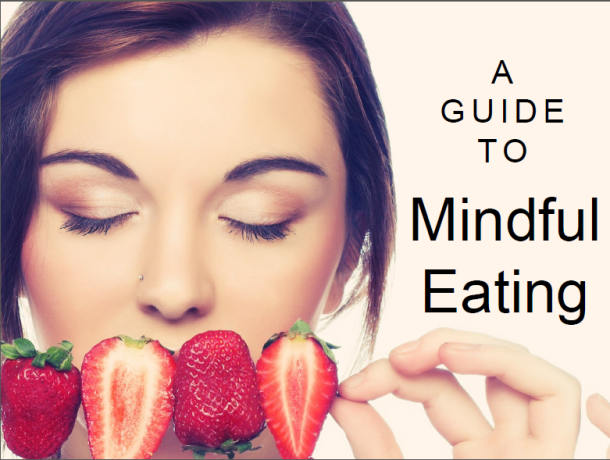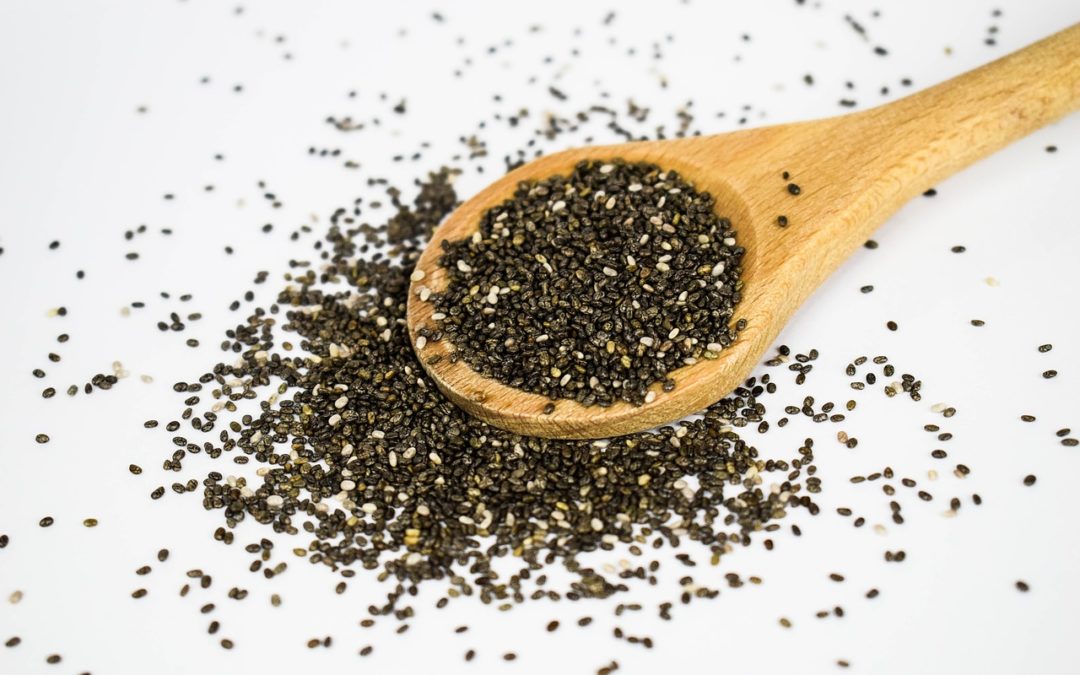
by dnshah | Mar 5, 2018 | Age Defying, Diet and Weight Loss, Health and Wellness Tips
An alarming 90% of Americans are NOT meeting their recommended omega 3 fatty acid intake. The American Heart Association recommends about 500mg for healthy individuals, and more for heart patients. Children, women of child bearing age, pregnant/lactating women, and Mexican Americans were the subgroups found to consume the lowest levels of omega 3.
Omega 3 is a fatty acid that helps reduce inflammation in the body. Omega 6 is a pro-inflammatory fatty acid. We need both in balance. Each fatty food will usually have some amount of both. Omega 3 is broken down into two components in the body which do the anti-inflammatory work and provide cardiovascular benefits, EPA & DHA. In order to ensure sufficient EPA & DHA, we can supplement OR improve our omega 3:6 ratio.
Previously our fatty foods had better omega 3:6 ratios, but lately due to a number of reasons (processing of foods, meat & dairy industry practices, egg industry practices, etc.) that ratio is changing with omega 6 (the pro-inflammatory agent) becoming higher and the omega 3 becoming lower. So, we have to purposely take actions to improve this ratio. The chart will show the top vegan food sources to improve the omega 3:6 ratio. Hopefully the awareness of omega content in the foods will empower people to meet their recommended intakes AND improve their omega ratio.
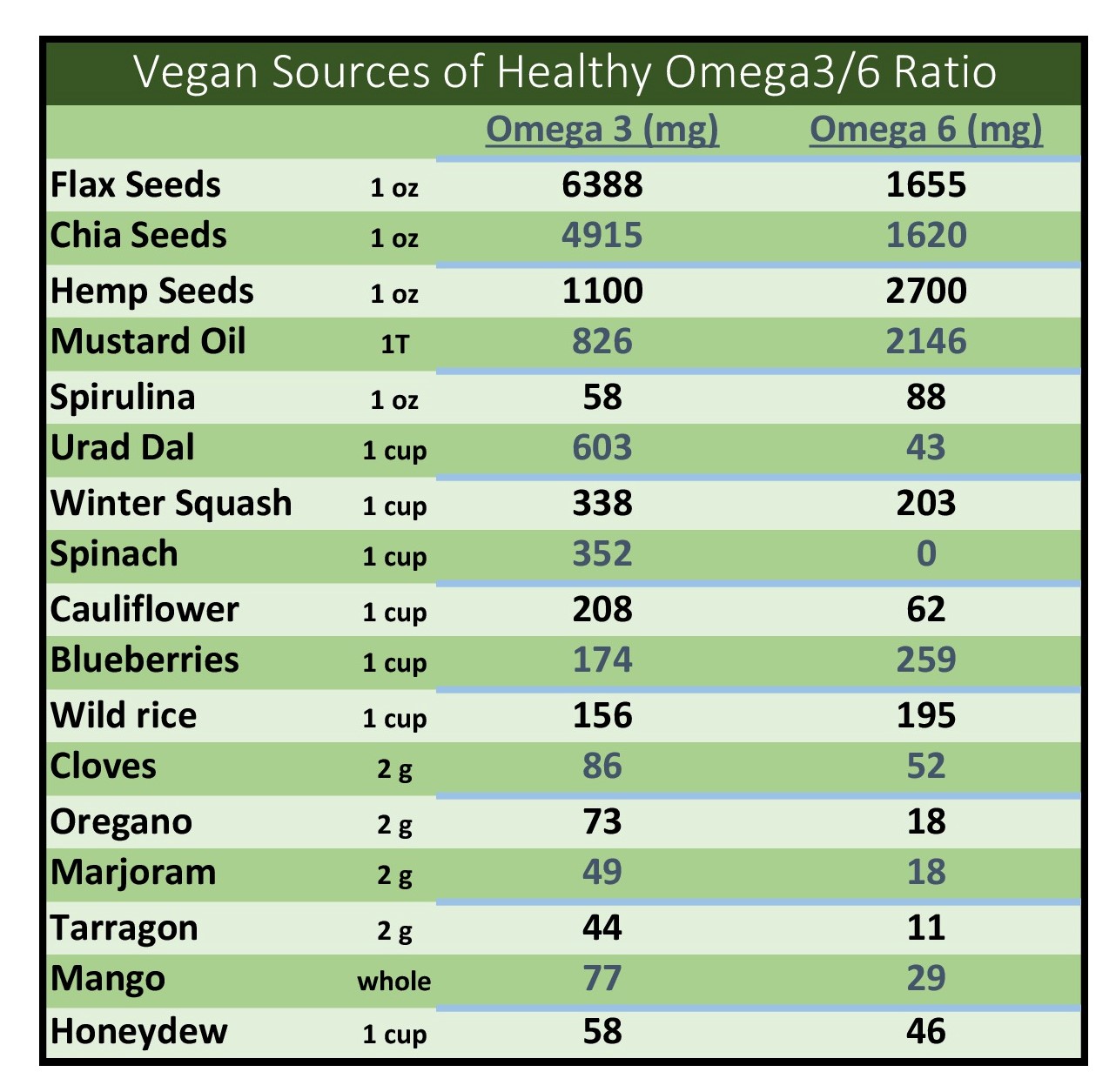
Resources:
- American Heart Association. Fish and omega-3 fatty acids
- Richter CK, Bowen KJ. Total long-chain n-3 fatty acid intake and food sources in the US compared to recommended intakes: NHANES 2003-2008. 2017;52(11):917-927
- Papanikolaou Y, Brooks J. US adults are not meeting recommended elvels for fish and omega-3 fatty acid intake: results on an analysis using observational data from NHANES 2003-2008. Nutr J. 2014;13:31
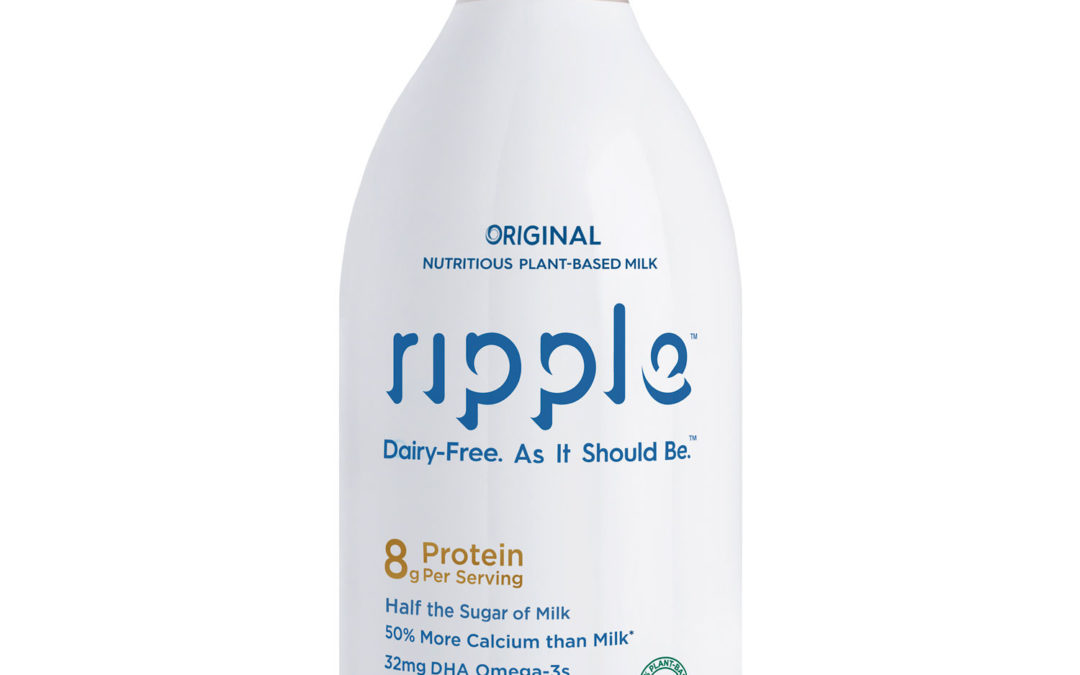
by dnshah | Aug 28, 2017 | Age Defying, Diet and Weight Loss, Health and Wellness Tips
I was recently asked what my favorite non-dairy milk was. I’ve been an early explorer of non-dairy alternatives for eating cereal with, or for lightening up my tea or coffee. You name it… I bet I’ve tried it. From store-bought brands of soy milk, almond milk, coconut milk, hemp milk, hazelnut milk, & cashew milk to home-made fresh almond milk varieties. I’ve tasted and experimented with each variety and I was satisfied with all my choices…. at least I thought I was satisfied… until I had a conversation with Niloy Phukan, Director of Sales for Ripple Foods.
It wasn’t until my conversation with him that I realized there was new competition in town that overcame some previous challenges in the non-dairy world. Could it be the true answer for all non-dairy milk drinkers in terms of taste, nutrition, health & sustainability?
Non-Dairy Milk Challenges
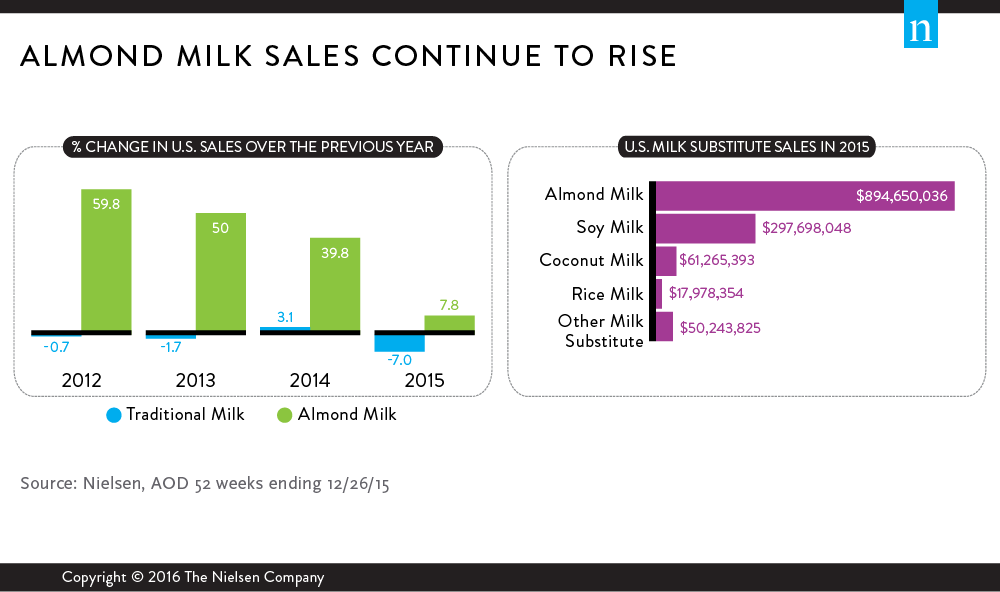
Almond milk (& other nut milks) seems very pure, ethical, and innocent. Well, at least for those that don’t have allergies! Ripple Foods has an informational campaign about almond milk production requirements: In terms of mass production, they claim it takes 60 gallons of water to produce 1 glass of dairy milk. It takes 20 gallons of water to produce 1 glass of almond milk. And it takes ½ gallon of water to produce 1 glass of their Ripple pea milk. So while they applaud almond milk’s eco-friendliness compared to dairy milk; they also point out their product as a clear winner of being eco-friendly.
Soy milk is controversial with the alleged threat of increased consumption of phyto-estrogens. The fear is that consuming soy-based products could be disrupting to the endocrine system (think thyroid gland). NOTE: I have yet to find an unbiased peer-reviewed scientific study proving soy proteins are human endocrine disruptors, but the discussion has been alive and strong for over a decade after many animal-based studies. If you love soymilk, drink it but limit yourself to 4oz. per day.
Coconut milk is a long-time favorite for desserts and smoothies because of its sweet yet light taste. Some take issue of it being the only non-dairy milk with saturated fat, but most understand it is a healthy choice. Last year the world experienced coconut challenges as the prices of coconut products soared with quantity limitations. Consumers were reminded that it may not be feasible to always have it on hand and that it is not a “green” solution to the non-dairy puzzle with product limitations, transportation issues, and negative environmental impacts.
Rice milk is not a big seller perhaps because of its high fermentable oligosaccharides, disaccharides, monosaccharides, and polyols (FODMAP) state. It means it has short chain carbohydrates that can’t be completely absorbed in the gastrointestinal (GI) tract and could be easily fermented causing GI stress. There is also the concern of arsenic and other heavy metals in rice processing.
Ripple Pea Milk is new to market (not well-known yet). By all notes thus far it has no sustainability issues being derived from US-based non-GMO yellow peas. They have patent-technology to isolate the protein allowing for a 0 – 2 gram carbohydrate product. Peas are not an endocrine disruptor. It is a “green” product with regards to water usage to derive it (93% less water than dairy milk).
Nutrition
An 8oz. glass of 2% dairy Milk has 122 calories, 5 g of fat, 11 g of carbs, and 8g of protein. From a nutritional viewpoint, Ripple milk boasts 8g of protein per 8oz. glass (the same as dairy), 50% more calcium than 2% dairy milk, more iron than 2% dair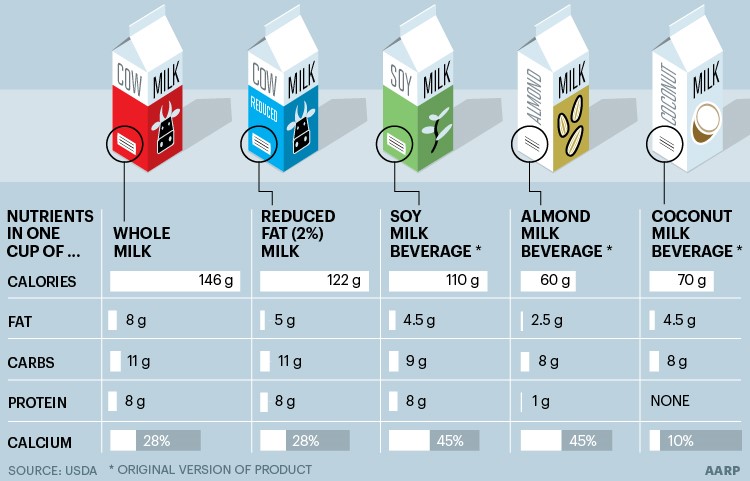 y milk, and a good source of vitamin D and DHA omega 3s. The unsweetened variety has 0 sugar, 0 carbs (patent pending technology to do this), and 4.5 g fat. The unsweetened vanilla has 2g carbs and 0 sugar.
y milk, and a good source of vitamin D and DHA omega 3s. The unsweetened variety has 0 sugar, 0 carbs (patent pending technology to do this), and 4.5 g fat. The unsweetened vanilla has 2g carbs and 0 sugar.
Availability & Taste
I looked for it at my local HEB grocery store, and the dairy representative said he couldn’t keep it on the shelf very long because it was so popular. I looked for it at my local Target, and was lucky to secure 2 bottles – one plain unsweetened and one chocolate. The chocolate one tastes like chocolate dairy milk, and the plain one tastes similar to Carnation instant milk. Since I primarily use non-dairy milk in the tea, I was a fan of the plain unsweetened variety. If you love your chocolate milk fix, note that there’s a new game in town!
From a Ripple point of view, there really is no nutritional equivalent… not even dairy milk. It is slated to become the LEADER of the non-dairy milk world. Available at select Target, HEB, Whole Foods, Sprouts, as well as many more stores soon to come – I’m quite certain! Ripple has also just released their half-&-half variety in some Targets and Whole Foods too! They plan on rolling out its yogurts soon so be on the watch!
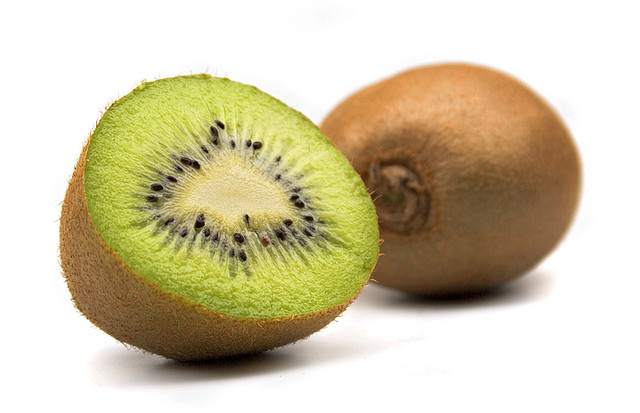
by dnshah | Mar 27, 2017 | Diet and Weight Loss, Health and Wellness Tips, Stress Management
Millions of Americans use medications, sleep aids, and natural supplements to help them sleep. Sleep issues are an increasing issue today. Sleep therapies can also include lifestyle changes, bedroom renovations, replacing mattresses, adding white- or zen-noise, minimizing electronic screen time, introducing red lights at night, and adjusting the temperature thermostats. But now studies are showing that there are some snacks that can empower sounder sleep to those craving rest.
The fact that dietary changes are helping insomniacs and others satisfy their slumber requirements introduces health benefits to LATE-NIGHT SNACKING. So what are the coveted snacks to satisfy our sweet slumber cravings?
- Warm Milk has long been taught by young mothers as a sleep inducer for their children – but it also works to comfort and relax any age-group.
- Kiwis actually may work better than warm milk. According to the journal, Advances in Nutrition, eating 2 kiwis one hour before bedtime helped insomniacs fall asleep faster and stay asleep longer.
- Tart Cherry juice seems to provide more than our daily vitamin C requirement! Drinking 1 cup of tart cherry juice in the morning and at night quelled insomnia and reduced night waking with insomniacs & adults in general.
Kiwis and Cherries have antioxidants that help protect against cell damage and chronic inflammation. Kiwis have serotonin, while cherries have melatonin – and both improve sleep. Whether you believe in dietary changes affecting sleep or not, there are few down sides to introducing these snack ideas when sleep becomes a challenge – so indulge when needed.
On the other hand, natural supplements don’t necessarily seem to improve sleep quality of speed by a large margin, yet do have long-term risks. Some common supplements, melatonin and valerian, for sleep may actually contribute to the side effects of dizziness, nausea, vivid dreaming, and sleepiness. Melatonin can also alter the effectiveness of other medications (blood pressure, diabetes, etc). Note that supplements are not regulated well by the FDA administration so the quality and purity can’t be verified. This author recommends looking for the “USP Verified” mark when purchasing these products.
Why is it so important to get your 7 hours of rest each night? Research shows people getting fewer than this are TWICE as likely to have a stroke or heart attack, AND 4.2 times as likely to catch a cold that those getting their healthy 7. However, when you find you are not able to get your healthy 7 hours, try indulging in a nap which can relieve some blood pressure issues associated with insomnia, and help to recover your immunity.
What is the best sleep position? According to The Journal of Neuroscience, sleeping on your side is best for a detox while you sleep. Detoxification helps your brain eliminate chemicals built up over time and reduces your risks of Alzheimer’s. Side sleeping is also best to minimize snoring and an backaches.

by dnshah | Mar 27, 2017 | Age Defying, Diet and Weight Loss, Health and Wellness Tips
People all over the world delight in sweet tasting foods – who doesn’t enjoy a decadent chocolate mousse cake or a hot fudge sundae? It would be quite odd to not enjoy a slice of birthday cake when celebrating a special occasion, or rewarding yourself with your favorite frozen treat. While our sugar consumption has steadily increased over the last 50 years, so has the incidence of diabetes and obesity. You see our bodies were designed to consume 5 basic tastes: sweet, salty, sour, bitter, and umami. We’ve got the sweet & salty mastered, but could use some work on the bitters.
Bitter compounds have considerable health benefits, and need to be sought out. Here are several foods with these healthy bitter compounds.
- Anthocyanins give berries their vibrant hue and are considered “bitters”. They improve vision, are anti-aging, and protect against heart disease and cancer. They are found in berries, black beans, cherries, peaches, pomegranates, plums, red onions, eggplant, and red cabbage.
- Catechins may prevent heart disease, lung- and prostate-cancer, and keep LDL cholesterol down. It is found in tea (black & green), cocoa, grapes, and red wine.
- Chlorogenic Acids reduce chronic inflammation, and may lower risk of heart disease, Alzheimer’s, Type 2 Diabetes, and arthritis. They are found in coffee and black tea.
- Glucosinolates have been shown to prevent the progress of cancer. Sulforaphane – a component of glucosinolates, has tumor-fighting properties. Cruciferous vegetables are a great source of glucosinolates: arugula, broccoli, Brussels sprouts, bok choy, cabbage, cauliflower, & kale
- Isoflavones can improve blood/oxygen flow, bone density, and are linked to a lower risk of breast and prostate cancer. Soybeans, Soyamilk, tofu, and tempeh are known sources of genistein and daidzein – two components of isoflavones.
- Naringin is associated with improvements in diabetes, obesity, and UV damaged cells. It is found in tomatoes and citrus fruits.
- Proanthyocyanidins mitigate tumor growth, and help prevent bacterial infections. They are found in apples, berries, cocoa, grapes, kiwi, avocados, and mangoes.
- Quercetin has antihistamine and anti-inflammatory properties that may protect against heart disease and cancer. It is found in apples, onions, leeks, radicchio, and radishes.
The next time you find the odd bitter on your plate, don’t turn up your nose at it – instead allow your tongue to savor the flavor and invite the goodness in.
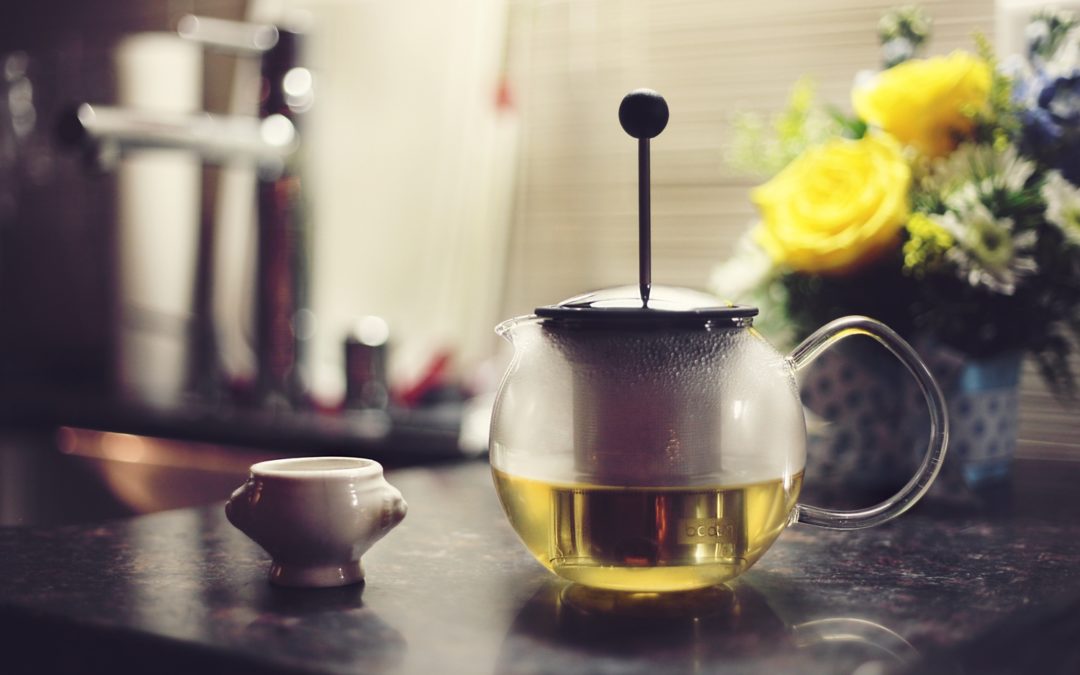
by dnshah | Mar 27, 2017 | Diet and Weight Loss, Health and Wellness Tips
If you ask this India-native, when is the best time to have a cup of tea – the answer will be ANYTIME! Tea is a comfort drink that soothes you, refreshes you, and heals you, according to a number of studies. But what tea is the best? It depends on a number of factors and preferences. In this article I will bring you information on 5 super healing teas categorized in 3 ways.
First, what is the most potent and most antioxidant tea in the world? White tea is the answer, and it is also the least processed tea – sun dried and contains 3 times the polyphenols as green tea, which is hailed as a healthy tea. It is high in caffeine, but not compared to coffee. According to Nutrition and Metabolism journal, white tea boosts lipolysis (fat breakdown) AND blocks adipogenesis (fat cell creation) so it multi-tasks fat loss, making it an ideal choice for slimming. A recommended brand is Twinings White.
Second, which teas boost metabolism for energy and weight loss? Green tea and Oolong tea answer this. Green tea has gotten fame for being healthy because of a compound called catechins which trigger the release of fat from adipose tissue, particularly in the belly region. Green tea is high in caffeine compared to other teas, however not compared to coffee. Oolong tea is light and floral and has less caffeine, but still holds great metabolic boosting power. According to the Chinese Journal of Integrative Medicine, regular oolongers lost more weight over 6 weeks that non-oolongers. Recommended brands are Yogi Green, and Bigelow Oolong.
Third, which tea can curb my hunger and satisfy my cravings? Mint tea and Roobios tea answer this. Neither tea is high in caffeine, so they can be enjoyed at the end of the day/evening if desired. They also satisfy a craving for something slightly sweet-ish and can delay hunger, while also reducing stress hormones. Roobios tea is especially useful for hypertension, metabolic syndrome, cardiovascular disease, insulin resistance, and type 2 diabetes. Recommended brands are Tazo Mint and Celestial Seasonings Roobios.
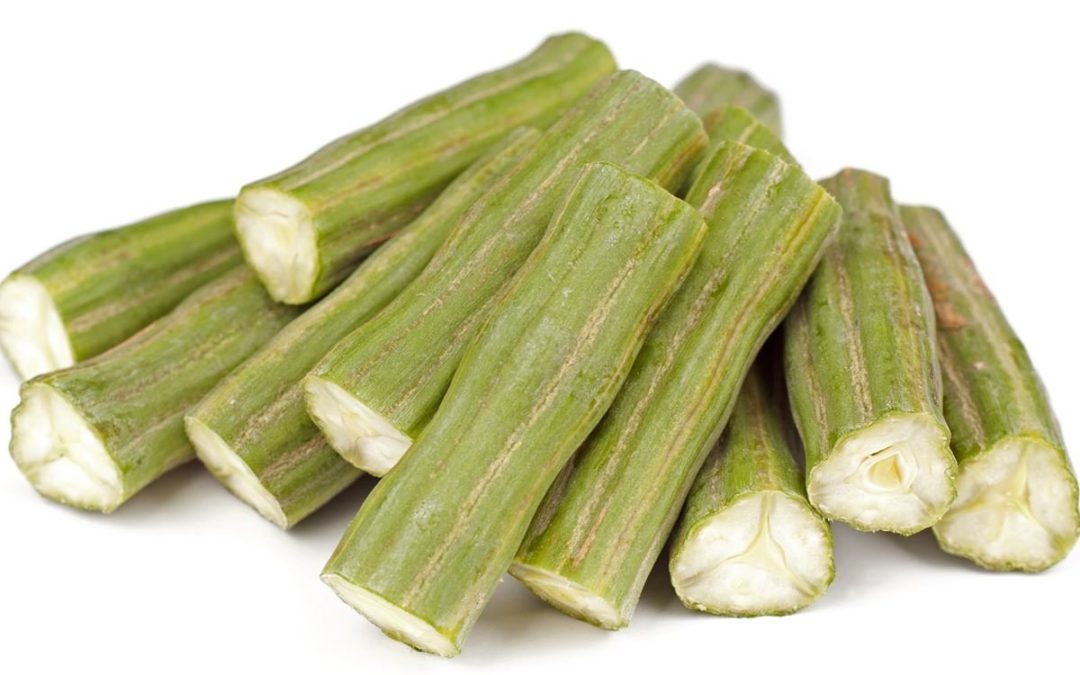
by dnshah | Jan 10, 2017 | Age Defying, Diet and Weight Loss, Health and Wellness Tips
I’ve eaten parts of moringa all my life as I was born in India and it is a delicious ingredient common in Southern regions of India. It is regarded as a “miracle tree” there. I also know that the benefits of moringa are so great, it is now offered as a supplement.
Moringa health benefits may include:
- Anti-inflammatory – which could help with chronic illness
- Immune boost – which could help fight against infections, skin ailments, and allergies
- Nutrient-dense food – which could help with nutritious menu planning
- Blood-Sugar Balancer – which could help better manage menu planning for all, especially diabetics
These collective benefits may help minimize symptoms of so many disorders and diseases while providing essential vitamins and minerals to nourish your physical body. It sounds great, but here’s the catch.
It is a bit messy to eat, so many people shy away from indulging. When there is a food that is so good for you…it’s practically a superfood, you have to get your hands a little dirty! I use it in a hearty stew as it lends a savory texture and flavor. It will not fit on a spoon well, so I pick it up and put it in my mouth. While still holding an edge, I close my mouth and sandwich it between my teeth (top & bottom). Then I gently pull it out while my teeth scrape the contents of this fibrous vegetable. Your fingers are left with the fibrous stem that is not eaten, while your mouth is enjoying the creamy flesh and pods which have absorbed the taste of your stew.
It is available at ethnic Asian markets throughout the US in the freezer section under the name “drumsticks”, and it is a very easy ingredient to work with in stews and dals.





 y milk, and a good source of vitamin D and DHA omega 3s. The unsweetened variety has 0 sugar, 0 carbs (patent pending technology to do this), and 4.5 g fat. The unsweetened vanilla has 2g carbs and 0 sugar.
y milk, and a good source of vitamin D and DHA omega 3s. The unsweetened variety has 0 sugar, 0 carbs (patent pending technology to do this), and 4.5 g fat. The unsweetened vanilla has 2g carbs and 0 sugar.



